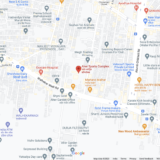
Damage to warehouse racking can raise your daily operating risk to dangerous levels. It can quickly lead to a racking collapse, which would damage:
- Vehicles
- Stock
- Infrastructure
It would also result in the quarantining of rack bays, aisles, and whole work zones. Most importantly, it poses a real threat to your employees.
Regular warehouse racking inspections are recommended by The Health and Safety Executive, and are an essential measure to reduce risk and ensure volume efficiency. They can also provide insights for making predictive maintenance decisions.
There are three different types of racking inspection:
- Continuous monitoring and reporting of racking damage. Employees should report any issues to the warehouse Person Responsible for Racking Safety (PRRS).
- Regular visual inspections by the warehouse PRRS.
- Thorough racking inspections at least once every 12 months by a “technically competent” person, such as a SEMA Approved Racking Inspector.
Racking must be inspected immediately if it has been moved, damaged or interfered with in any other way. Any other causes for concern must be reported to the PRRS.
What does a racking inspection look for?
Racking inspections are a form of risk assessment. They look for any damage in the racking, and can highlight vulnerable areas. The inspection is a crucial opportunity to identify and repair or replace any areas of damaged racking.
According to SEMA, the main areas which will be inspected during a racking inspection are:
- Beams
- Uprights
- Frame bracing
- Floor fixings
- Lock in clips
The inspection will look for any visible damage including general wear and tear from daily use. This is critical, as even slight damage to the racking can reduce the storage capacity and make it unusable.
The results of the inspection, including any damage and repairs, will then be labelled as one of the following:
• Green – damage level is low enough to allow the racking to be used with no further action.
• Amber – damage requires remedial work but is not severe enough to require immediate unloading of the rack. Once the rack has been unloaded, it should not be reloaded until the damage has been repaired. If the racking has not been unloaded after four weeks, the racking must be immediately unloaded until repaired.
• Red – a high level of damage is identified. The area of racking must be immediately unloaded and not used until it has been repaired.
Who conducts the inspection?
The Health and Safety Executive (HSE) HSG76 guidance recommends a thorough annual racking inspection be conducted by a “technically competent” individual. This can be a trained specialist or an external “independent qualified rack inspector.”
The HSE specifically recommends SEMA-approved racking inspectors or an individual who follows the SEMA guidelines. It is a warehouse owner’s legal duty to ensure that the people working in the warehouse are “competent” according to HSE CDM regulations. Therefore, it is crucial for your inspector to have the relevant credentials.
How often should racking be inspected?
The Health and Safety Executive recommends a thorough racking inspection takes place at least once every 12 months.
However, a PRRS should visually check the racking each week, and the result of the inspection should be logged.
The Provision and Use of Work Equipment Regulations (PUWER) 1998 also state that equipment would require further inspection if circumstances “jeopardise the safety of the work equipment“. Therefore, if racking has been moved or damaged it is critical to conduct a thorough inspection immediately.
In busy facilities, continual monitoring technology is the safest option to assist with these inspections. RackEye guides racking inspections by EN 15635:2008 standard, and provides a digital observation of facility trends over time.
Why are racking inspections important?
Racking inspections identify any signs of damage to the racking itself. It can also highlight any hotspot areas which are at risk of further impact. Over time, even small bumps and scrapes can cause racking to degrade if it is not carefully monitored. This can lead to racking collapse.
Regular racking inspections are also a key part of health and safety compliance. The HSE has guidelines in place to ensure workers’ safety. Independent racking inspections are a vital part of the HSE’s regulations.
If an accident happens, adherence to HSE guidelines and recommendations would be investigated. Facilities that do not meet these standards risk being found negligent. Therefore they would be liable if unmaintained racking resulted in the injury of a worker.
Section 6 of PUWER 1998 legislation highlights the necessity of regular and thorough inspections of work equipment. Racking, including mezzanine floors, is subject to this legislation. It is the responsibility of facility management to ensure the equipment is properly inspected at the recommended intervals.
How to prevent racking damage
The best way to protect your racking is to prevent the main causes of racking damage. The HSE outlines that any racking which is exposed to machinery or vehicles should have a form of protection. This especially applies to racking on a ground level where racking is more likely to be hit. Forms of racking protection include rack end barriers, rack leg protectors and kerb barriers.
RackEye rack monitoring technology also provides real-time data on racking conditions. Managers can undertake predictive maintenance by identifying hotspots and addressing any layout problems to prevent further racking damage.


